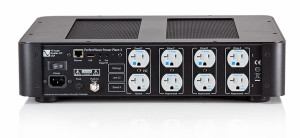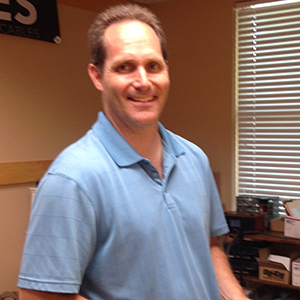By Paul Speltz
In last month’s newsletter, I presented my theory as to “why power cords matter” to the music. Here I will take that thought one step further and discuss Power Conditioners.
Many power cords make lateral changes, making the music sound “different”. You may have experienced this yourself at some time. Aspects of the component’s sound makes slight changes, some for the better, some for the worst. With those power cords, I believe much of the outcome has to do with how lucky you are with creating synergy between that particular component and that particular power cord.
Using our “first five feet” design model (as discussed HERE), I theorize that a properly designed power cord has the opportunity to help get the noise generated in the component’s own power supply out of the component (so it does not get into the music). Part of why I believe this theory holds true, is because early on, we found that with our power cord design, it sounds better when plugged directly into the mains AC wall socket. It seemed as though when plugging our power code into a power conditioner, it’s capabilities are notable reduced. How could this be the case?
My thought is, power conditioners that are filtering noise on the AC mains by adding series impedance in the noise frequency spectrum, goes both ways. In other words, if the power conditioner adds an electrical “softness” in the path between the AC mains and the component, that means that same electrical softness is there on the same path from the component back to the AC mains. The theory is, that electrical softness is reducing our power cord’s ability to dump away the noise generated in the component’s own power supply.
The other common side effect of this electrical softness is a reduction of dynamics. For me, musical dynamics is a big part of the difference between live music and playback of recorded music, so I want all the dynamics I can get.
Like Don reported in his findings (as shown HERE), all but two customers have ever reported getting sonic benefit with their power conditioner when using our ANTICABLES Power Cords. In working with those two exceptions, it comes to find out, in both cases their power conditioners were actually power regenerators. This makes total sense because power regenerators are not going to have that electrical softness that a passive power conditioner has.
The Pros
If you have on your system’s “wish-list” to add a power conditioner to get better sound, you can re-budget those funds towards getting properly designed power cords. Or, if you already have an expensive power conditioner and find with our power cords you get better sound without it, you can sell it off to help pay for the new power cords.
The Caveat
Power conditioners are multi functional. Each power conditioner design can do any single or different combination of these functions: passive noise filtering, spike protection, over voltage shutdown, voltage and current meters, power up sequencing, over current fuses, power regeneration, transformer isolation, balanced power, etc.
 If your purpose for your existing power conditioner is only to improve the sound, and if you find that with our ANTICABLES Power Cords you get better sound without it, it will be easy to abandon it. If your power conditioner’s purpose is to try to protect your equipment from power surges, yet you find that with our ANTICABLES Power Cords you get better sound with it, you will have to decide between improved safety or improved sound.
If your purpose for your existing power conditioner is only to improve the sound, and if you find that with our ANTICABLES Power Cords you get better sound without it, it will be easy to abandon it. If your power conditioner’s purpose is to try to protect your equipment from power surges, yet you find that with our ANTICABLES Power Cords you get better sound with it, you will have to decide between improved safety or improved sound.
From the experience our customers have brought to me, if you want the protection of a power conditioner without the sonic compromise, try our power cords with a power regenerator. And yes, our customers have also reported getting even better sound when running their power regenerator with our Level 3 Power Cord.
The Sales Pitch
We invite you to discover why our Level 3 Power Cord have become our top selling product, by trying one in your system. Like all of our products, it comes with our 30 Day Trial Period, our 60 Day Upgrade Option, our Buy Back program, and our 5 Year Warranty.
We think you will really enjoy them.
 Thaine comes to us from the Upper Peninsula of Michigan. He moved to Minnesota last August as a recent graduate of Michigan Technological University in Biomedical Engineering.
Thaine comes to us from the Upper Peninsula of Michigan. He moved to Minnesota last August as a recent graduate of Michigan Technological University in Biomedical Engineering. Each time you place an order with us, it is hand-assembled by our team in Lake Elmo, Minnesota USA. Scott is one of our product assemblers, specializing in assembly of our high end power cords.
Each time you place an order with us, it is hand-assembled by our team in Lake Elmo, Minnesota USA. Scott is one of our product assemblers, specializing in assembly of our high end power cords.

